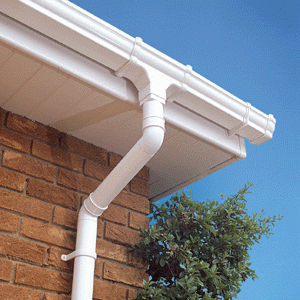seamless-gutters8719
seamless-gutters8719
The 10 Scariest Things About Best Guttering
The Comprehensive Guide to Choosing the Best Guttering: Everything You Need to Know
Guttering plays an important function in maintaining the structural integrity of a home. By gathering and directing rainwater away from the roof and the structure of a building, reliable guttering systems secure homes from leakages, mold, and erosion. With a range of guttering options available in the market, selecting the best guttering system can appear overwhelming. This post will use a thorough guide on gutter types, materials, benefits of proper guttering, and FAQs to help you make a notified decision.

Understanding Guttering Systems
Before diving into the various types of guttering available, it’s necessary to understand the basic components of a guttering system. Ultimately, a guttering system consists of:
- Gutters: The channels that collect rainwater.
- Downspouts: Vertical pipes that transfer water from the gutters to the ground or drainage system.
- Wall mounts and brackets: Support systems that hold the gutters in place.
- End caps: Close off the ends of the gutters.
Types of Guttering
There are numerous types of gutter systems available, each with its benefits and drawbacks. The most typical types include:
| Type of Gutter | Description | Pros | Cons |
|---|---|---|---|
| K-Style Gutters | Defined by a flat bottom and ornamental fronts. Available in different sizes. | High water capability; versatile style. | Can flex if not correctly supported. |
| Half-Round Gutters | Semi-circular shape that enables for efficient water circulation. | Visual appeal; easy maintenance. | Less appropriate for heavy rainfall. |
| Fascia Gutters | Installed straight onto the fascia board. | Seamless look; simpler installation. | Minimal water capability. |
| Box Gutters | Rectangle-shaped shape, frequently concealed within the roof structure. | Outstanding for heavy-duty applications. | Higher installation costs. |
Product Options
Choosing the ideal product for your gutters is as essential as choosing the type. The most typical products consist of:
| Material | Description | Pros | Cons |
|---|---|---|---|
| Aluminum | Light-weight and corrosion-resistant. | Affordable; available in different colors. | Can be dented quickly. |
| Vinyl | Made from PVC, very lightweight. | No rust; easy installation. | Restricted color options; can end up being fragile in winter. |
| Copper | Long lasting and attractive material. | Lasting; distinct appearance. | High expense; needs professional installation. |
| Steel | Strong and resilient. | Resistant to damage; readily available in numerous finishes. | Heavy; prone to rust if not treated. |
Advantages of Proper Guttering
Picking the appropriate guttering system and preserving it can substantially improve the longevity of your property. Some advantages consist of:
- Water Damage Prevention: By efficiently directing rainwater away, gutters assist avoid leaks and moisture issues in walls and foundations.
- Foundation Protection: Proper guttering reduces soil disintegration and keeps the structure of your home stable.
- Pest Control: Effective drainage prevents standing water, which can bring in pests such as mosquitoes.
- Boosted Curb Appeal: Well-maintained gutters improve the total aesthetic appeals of a home.
Maintenance Tips for Guttering
To ensure your gutter system operates at peak performance, routine maintenance is essential. Here are some maintenance suggestions:
- Clean Gutters Regularly: Remove leaves and debris at least two times a year to prevent blockages.
- Inspect for Damage: Check for signs of wear and tear, rust, or leakages, and resolve any concerns without delay.
- Guarantee Proper Slope: Gutters should be angled properly towards downspouts to help with the circulation of water.
- Check Downspouts: Ensure that downspouts aren’t obstructed and can efficiently drain pipes water away from the structure.
Frequently asked questions About Guttering
1. How do I know what kind of guttering is best for my home?
The very best type of guttering for your home depends upon elements such as your local climate, the size of your residential or commercial property, aesthetic choices, and budget plan. Consulting with a professional can help narrow down your options.
2. How often should I clean my gutters?
It is normally recommended to clean your gutters a minimum of twice a year. However, if you live in a greatly woody area, you may require to clean them more often.
3. What are the signs that my gutters require to be replaced?
Search for the following indications:
- Cracks or splits in the gutters.
- Rust or corrosion.
- Peeling paint on the exterior of the home.
- Water damage or mold around the foundation.
4. Can I install gutters myself?
While DIY installation is possible, it needs the right tools and understanding about the system. For homeowners with limited experience, hiring a professional is often recommended.
5. How long do gutters generally last?
The lifespan of gutters differs by material. Aluminum gutters can last 20 years, while copper systems can last over 50 years with proper maintenance.
Picking the Best Guttering (this website) system for your home is important in protecting your residential or commercial property from water damage. Comprehending the different types, materials, and the importance of maintenance can significantly affect your option. Whether you choose the aesthetic appeal of copper gutters or the cost-effectiveness of aluminum, there’s an option for each requirement. Prioritizing guttering can enhance both functionality and curb appeal, protecting the durability of your home.





